Dulcimer Amplification
An acoustic instrument such as a guitar or dulcimer produces plenty of sound for an individual player or a small group of friends gathered in a small room. But to be heard in a larger room or outdoors venue you often must amplify the instrument. There are various methods to amplify an instrument and this article discusses the pros and cons of the most common methods.
Let’s first understand what amplification entails. When a string is plucked on a dulcimer it vibrates at a certain frequency. This vibration is transferred to the body of the dulcimer through the nut and bridge and causes the body of the dulcimer to vibrate at the same frequency. This vibration compresses and expands the air inside the body of the dulcimer at the same frequency as the string’s vibrations and this compression/expansion of air is what we hear as sound waves. This is natural amplification with the body of the dulcimer increasing or "amplifying" the sound of the strings.
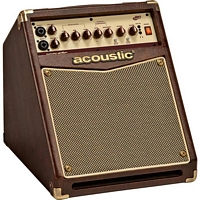
For electronic amplification, a device (a transducer or “pickup”) senses the string’s vibrations or the vibrations of the wood and converts these vibrations into a small electrical signal of the same frequency. This signal is sent to an amplifier where it is “amplified” to a level that will drive a speaker. The speaker reverses the process by vibrating at the same frequency as the electrical signal and creating an audible sound wave.
The amplifier can be a stand alone amp or a sound system (P.A. or public address system as used at large gatherings). The topic of amplifiers is a enormous subject that will not be covered in this brief article.
Microphones
If authentic reproduction of sound is the main criteria, then the best way to amplify an acoustic instrument is to use a high quality microphone. A microphone captures the sound a listener would hear if sitting close to the instrument. The human ear picks up not only the sound coming from the instrument, but also the reflected sound or “reverberations” (commonly known as reverb) of the sound bouncing off walls and reaching the ear micro-seconds after the original sound. These reflected and delayed sound waves combine with the original sound to produce a fuller tone richer in overtones. However, there are some drawbacks to microphones.
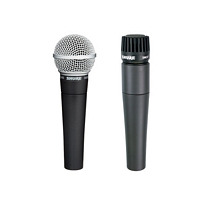
First, most microphones designed for instruments used in a live setting are intentionally made to pick up only sounds within a few inches distance while ignoring the ambient noises around the instrument. This characteristic of only picking up instruments at very close range is called a “proximity effect.” The proximity effect can be used to great advantage as when a bluegrass guitar player leans in to play a quick “G-run” at the end of a phrase. But if the goal is an even volume then it is important to maintain an unvarying distance from the microphone. This can be difficult when the physical requirements of playing an instrument causes one to move around quite a bit even when sitting. This moving in and out of the microphone's proximity can cause drop outs in sound as the player moves out of the effective range of the microphone. You can compensate for this by using a microphone that picks up sound over a wider area, but then you run the risk of picking up other instruments, stage, crowd and room noise.

A second disadvantage is that acoustic instruments are fairly quiet - especially in an outside venue. Unless the mic is placed extremely close, then the gain or volume of the mic has to be increased. This increase in gain decreases the proximity effect discussed above and means the microphone will begin to pickup sound over a wider area. If this wider area includes the sound coming out of the speakers it will create the phenomenon known as “feedback”. Feedback is exactly what the word indicates. The microphone picks up the sound of the speakers and feeds it back through the amplifier where it is again amplified and sent through the speakers. This creates a loop which increases in speed and intensity to create the screeching, ear-splitting howl often heard at live performances.
Microphones work best in situations where there is a sound system with a mixing board and associated sound processing equipment such as equalizers, compressors, noise gates, etc. (outside the realm of this brief synopsis) such as a studio. Since studios are designed to be quiet recording environments, mics are the preferred method of recording acoustic instruments. Quality microphones use a cable with a three pin connector. However, you can plug a microphone into a stand alone amp using an adapter to convert the microphone cable to the 1/4" input used by most amplifiers.
Magnetic Pickups
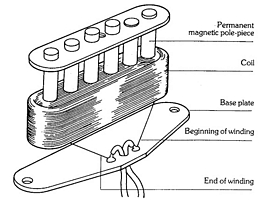
Solid body instruments such as electric guitars, as well as some acoustic instruments, generally use magnetic pickups. Magnetic pickups are basically magnets wrapped with a coil of copper wire. When the metal string vibrates across the coil, a small alternating current is induced in the pickup and the signal is sent to an amplifier. Many things affect the tone produced by a magnetic pickup - the number of windings in the coil, the type of magnet, the diameter of the wire, the pickup's electrical resistance,etc. Most magnetic pickups are tailored to respond to a certain range of frequencies and therefore to reproduce a predetermined tone (for instance, with electric guitars - the thin sound of a Fender Telecaster or the fat sound of a Gibson Les Paul). In many cases, the pickup’s inherent tonal characteristics become more important to the instrument’s sound than the instrument itself.
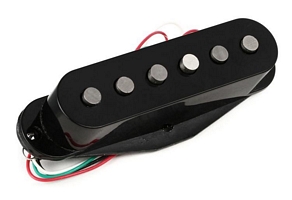
Magnetic pickups come in two flavors - single coil and humbuckers. As the name implies, a single coil pickup uses one coil of wire. Single coils have a much better high frequency response and therefore sound much brighter and crisp than a humbucker. However, they have one drawback - they are very prone to produce a loud hum when in close proximity to the amplifier. Seth Lover of Gibson guitars and Ray Butts of Gretsch each working independently are generally credited with solving this problem by creating the "humbucking" pickup. A humbucker is simply two single coils wired together in series but out of phase to cancel the hum. While this eliminates the hum it also dramatically decreases the high frequency response, which creates a fuller fatter tone. Neither a humbucker or single coil is better - just different and in the end it is all a matter of personal preference. However, a humbucking pickup can be wired to function as a single coil by wiring a switch to only use one of the coils. A single coil cannot be wired to function as a humbucker.
The main advantage of a magnetic pickup is that it does not pick up ambient sound, but only the instrument's string vibrations. This allows for high volumes without feedback, although at extreme high volumes a magnetic pickup will also begin to feedback.
But magnetic pickups offer severe disadvantages for acoustic instruments. First, the sound produced by an acoustic instrument using a magnetic pickup is far different than that of the actual instrument. Even a non-musician can easily discern the difference in sound between an electric and acoustic guitar. In fact, among musicians, electric and acoustic guitars are often thought of as completely different instruments.
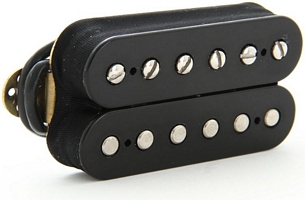
Another major disadvantage is that a magnetic pickup is a fairly heavy device. The combination of a large magnet, copper coil(s) of wire, the plastic bobbin, metal base plate, pickup cover and associated wiring adds significant weight when attached to a dulcimer or guitar's top. To compound the problem, magnetic guitar style pickups are often accompanied by volume and tone controls also mounted onto the dulcimer's top adding even more sound-dampening weight. On an acoustic instrument such as a dulcimer, a large percentage of the tone is produced by the top. Attaching a heavy pickup to the top will significantly dampen the top's vibrations and therefore dramatically decrease the sound quality of the instrument. Acoustic guitar makers have attempted to overcome this obstacle by having the pickup "float" above the top by attaching it to the end of the fretboard. However, this is not an option for dulcimers since the fretboard is essentially part of the top. So even when the magnetic pickup is not in use it still has a detrimental effect on the dulcimer's natural acoustic sound.
A third disadvantage is appearance. Part of the allure of a mountain dulcimer is the beauty of the instrument. Having a large plastic device screwed onto the top of a dulcimer simply does not fit well with the traditional beauty of the dulcimer.
Since dulcimers are primarily folk instruments, these disadvantages make magnetic pickups unacceptable unless you are looking for an "alternate" non-traditional dulcimer. Magnetic pickups work fine for solid body dulcimers and guitars and are the preferred method of amplification for those instruments. In fact, the solid body guitar was invented to provide a instrument for the magnetic pickup instead of the pickup being invented to work with the guitar.
Magnetic pickups normally use a cable with 1/4" connectors or plugs. While most mixing boards have inputs that allow direct connection of these cables, many people use an adaptor to convert the 1/4" plug to a microphone input or a DI (direct injection) box that better matches the impedance of the pickup to that of the mixing board. This is not necessary when plugging into a stand alone amp since they are designed for use with these pickups and universally have 1/4" inputs.
Peizo Pickups
A peizo pickup uses a different approach to instrument amplification. A peizo element is a small, lightweight disc of two dissimilar metals placed together. When placed under stress or pressure, the peizo element produces a small electrical current. A peizo pickup senses pressure or vibrations and converts the pressure into the corresponding frequency. So when attached to an instrument it picks up the vibrations of the wood instead of the magnetic property of the strings.
Theoretically, a peizo pickup has no inherent tonal characteristics and reproduces all frequencies equally. It is attached to the underside of the instrument’s top or inserted under the bridge and is also used in clip-on pickups . Since the peizo pickup “picks up” the vibrations of the wood instead of the metal strings, it reproduces a tone closer to the natural sound of the instrument with minimum added coloration. Some describe it as a "woody" tone.
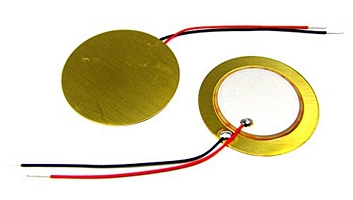
Like a magnetic pickup, a peizo does not pickup ambient sound so you get only the sound of the instrument. But also like the magnetic, at extreme volumes the peizo can feedback, although the problem is nowhere near the magnitude encountered when using a microphone.
Another benefit of a peizo is that it has no affect on the dulcimers natural acoustic sound. So when the dulcimer is not plugged in it is the same as if no pickup were installed. And not only is a peizo transparent regarding the instument's natural sound, but it is completely unobtrusive in regards to appearance since it is hidden inside the dulcimer. Of course, if tone, volume or EQ controls are installed this no longer holds true.
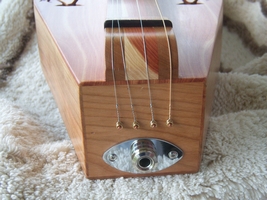
A peizo pickup typically uses the same standard 1/4" connectors as is used on other instruments. Many people like to use a pre-amp with a peizo to increase its power output, although I find they work fine without one. The adaptors and DI boxes mentioned above are also common with instruments using a peizo pickup when plugged into a mixing board. But I find that when using a stand alone amp you can simply plug the dulcimer directly into the amp with excellent results unless you want to play at very high volumes.
From my experience, a peizo pickup is the best all around solution to dulcimer amplification. My peizo pickups are permanently affixed to the underside of the dulcimer soundboard and the signal is routed to a combination output jack and strap button. Not only is the the sound better than magetic pickups, since it accurately reproduces the actual tone of the dulcimer, but it doesn’t detract from the beauty of the instrument or affect the tonal characteristics of the dulcimer when played without amplification. In fact, no one will ever know you are playing an “electric” dulcimer!!!